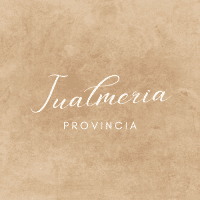How can real estate developers incorporate immersive landscape design to enhance outdoor living spaces?

In the evolving world of real estate, developers continually seek innovative ways to make their properties stand out. One emerging trend is the incorporation of immersive landscape design to enhance outdoor living spaces. This design approach blends the built environment with the natural world to create captivating, sustainable, and functional outdoor spaces. This article explores how real estate developers can utilize immersive landscape design to elevate their properties, enhance the appeal, and ultimately, increase the value of their investment.
The Concept of Immersive Landscape Design
Immersive landscape design is a concept that goes beyond the traditional approach to landscaping. It’s not just about planting trees and flowers but creating a holistic living environment that evokes a sense of serenity, connection, and pleasurable living. Let’s delve deeper into this concept and how it’s transforming the real estate landscape.
Sujet a lire : What are the challenges and opportunities in implementing circular economy principles in real estate development?
Immersive landscape design focuses on creating spaces that harmonize with the natural environment while meeting the functional needs of the inhabitants. It is about creating a seamless transition between the indoors and the outdoors, allowing residents to fully immerse themselves in nature even while remaining within the comforts of their homes.
Key elements of immersive landscape design include native vegetation, water features, natural materials, wildlife habitats, and sustainable practices. By integrating these elements, developers can create outdoor living spaces that are not only beautiful but also promote ecological balance and sustainability.
A découvrir également : How to design real estate projects that can easily adapt to future technological advancements and lifestyle changes?
Enhancing Property Appeal through Immersive Landscape Design
At its core, real estate is about creating spaces where people want to live. By incorporating immersive landscape design, developers can enhance the appeal of their properties, which can ultimately boost their profitability. Here’s how it works.
Well-executed immersive landscape design can significantly enhance a property’s visual appeal. Imagine a property that features a blend of natural and built elements, from lush gardens and scenic water features to cozy outdoor lounges and fire pits. Such a property would undoubtedly captivate potential buyers or renters, setting it apart from the competition.
Moreover, immersive landscape design can evoke emotional responses that drive purchasing decisions. A landscape that enables people to connect with nature and experience tranquility can make a property feel more like a home rather than just a built structure.
Benefits of Immersive Landscape Design
Besides enhancing the visual appeal, immersive landscape design brings numerous benefits that might not be immediately obvious. Let’s explore some of these benefits and how they can impact real estate development.
Sustainability is a paramount concern in modern real estate development, and immersive landscape design goes a long way in promoting this. By using native plants and eco-friendly materials, developers can reduce their properties’ environmental impact, which is a significant selling point in today’s eco-conscious market.
Also, immersive landscape design can contribute to human health and wellbeing. Studies show that exposure to nature can reduce stress, improve mood, boost concentration, and promote physical activity. By creating outdoor spaces that encourage interaction with nature, developers can enhance residents’ quality of life.
Practical Ways to Incorporate Immersive Landscape Design
Now that we understand the concept, appeal, and benefits of immersive landscape design, let’s look at some practical ways real estate developers can incorporate it into their properties.
One way to achieve immersive landscape design is by using native vegetation. Native plants not only contribute to the visual appeal but also require less maintenance, as they are naturally suited to the local climate and soil conditions. They also provide habitat for local wildlife, promoting biodiversity.
Water features, such as ponds, waterfalls, or streams, can dramatically enhance the sensory experience of an outdoor space. They provide visual interest, create soothing sounds, and can even help cool the area during hot weather.
Using natural materials for outdoor structures and furniture can also help create a sense of immersion. Wood, stone, and other natural materials blend seamlessly with the surrounding environment, reinforcing the connection with nature.
Finally, developers should consider the flow between indoor and outdoor spaces. Large windows, glass doors, or open-plan layouts can help blur the line between inside and outside, encouraging residents to use and appreciate their outdoor living spaces.
In conclusion, immersive landscape design offers an effective strategy for real estate developers to enhance their properties and boost their competitive edge. By creating visually appealing, functional, and sustainable outdoor living spaces, developers can deliver more than just buildings – they can provide a lifestyle that many modern consumers desire.
Creating Functional and Aesthetic Spaces with Immersive Landscape Design
Implementing immersive landscape design into real estate development goes beyond just aesthetics. It enhances functionality, increases the property’s appeal and value, and contributes to sustainability. This section will delve into how developers can create aesthetic and functional spaces through immersive landscape design.
A key principle of immersive landscape design is creating spaces that serve multiple functions. For instance, a well-designed outdoor space can serve as a venue for social gatherings, a peaceful retreat, or a playground for children.
Developers can create such multifunctional spaces by incorporating a variety of elements and features. For instance, patios or decks can be designed for both lounging and dining. Gardens can include both ornamental plants for visual appeal and edible plants for homegrown produce. Play areas for children can be integrated into the landscape without disrupting the overall design.
Additionally, developers can use elements like pergolas, gazebos, and shade sails to provide shelter and create distinct outdoor ‘rooms’. Lighting is another crucial component; it enhances safety, allows for night-time use of the space, and adds to the overall ambiance.
Functional design also involves considering practical aspects like maintenance, accessibility, and privacy. For instance, selecting low-maintenance plants, ensuring easy access to outdoor areas, and using elements like fences and hedges to provide privacy.
Conclusion: Immersive Landscape Design as a Game-Changer for Real Estate Development
In the face of changing consumer preferences and heightened environmental awareness, real estate developers are constantly seeking new ways to differentiate their offerings and add value to their properties. Immersive landscape design is proving to be a game-changing strategy in this regard.
By integrating the built environment with the natural world, immersive landscape design allows developers to create outdoor spaces that are not just aesthetically pleasing but also functional, sustainable, and conducive to wellbeing. Such spaces not only enhance the appeal and value of properties but also improve the quality of life for the inhabitants.
Incorporating immersive landscape design into real estate development involves careful planning, knowledge of local ecology, and a keen understanding of the target market’s preferences. Therefore, developers should consider working with experienced landscape architects and designers to achieve the best results.
Ultimately, the goal of immersive landscape design – and of real estate development in general – is to create spaces where people feel at home, connected with nature, and satisfied with their living environment. With this approach, developers can deliver more than just buildings – they can create lifestyles. In doing so, they can position themselves for success in the competitive real estate market.
